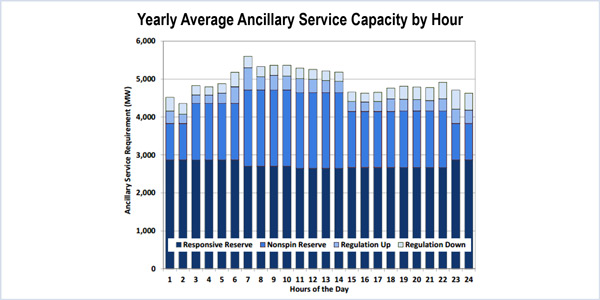By Tom Kleckner
AUSTIN, Texas — Potomac Economics’ David Patton told ERCOT’s Board of Directors last week that while the ISO’s market performed “competitively” in 2016, there’s still room for improvement.
Delivering an overview of his firm’s recent State of the Market report for the Texas grid operator, Patton said more efficiencies would be gained by improving the market’s price formation and, more important, real-time co-optimization of energy and ancillary services. Potomac Economics, ERCOT’s Independent Market Monitor, filed its most recent market report with the Public Utility Commission of Texas in May. (See “IMM Offers Additional Suggestions to Improve Markets,” ERCOT Briefs.)
“Co-optimization is our highest priority recommendation,” Patton said, noting that he has been making that same recommendation since ERCOT’s nodal market was developed last decade.
“Co-optimizing energy and ancillary services is one thing you can do to lower costs the most, and to ensure efficient pricing in real time,” he continued. “More importantly, co-optimization allows for efficient shortage pricing. With sustained shortages, there’s going to be a lot of revenue generated and lots of costs generated. Having a system where you are confident the use of resources has been maximized and the dispatch has been optimized, the shortages you’re pricing are real shortages, not an artifact of some dysfunction where you can’t get all the ramping capability of all your resources efficiently.”
Patton called real-time co-optimization a “more elegant process” than ERCOT’s current practice of “producing adders to try and mimic what a co-optimized system would do.” He said jointly optimizing the energy and reserve markets would allow shortage pricing under the operating reserve demand curve (ORDC) — which sets real-time energy prices reflecting the expected value of lost load — to be more accurate. The real-time market would determine every five minutes whether a shortage of either energy or reserves exists and set prices accordingly. Currently, capacity providing responsive or regulating reserves are not available to be converted into energy.
“Instead of producing an adder, you are allocating megawatts between products to manage constraints and satisfy load and reserve requirements,” he said. “When the system runs out of resources and can’t manage the reserve requirements, the marginal cost of the last megawatt of reserves you can’t satisfy will set the ancillary service price and be embedded in the energy price. If you’re in a transmission shortage and you’ve ramped what you can ramp, but you can’t get the flow beneath the limit, it will optimally establish congestion prices that reflect that transmission shortage.”
A co-optimized market would benefit ERCOT’s smaller qualified scheduling entities (QSEs) when they are allocated ancillary services, Patton said. QSEs with large portfolios can move reserves between generating units at lower costs, he noted.
“Co-optimization, with that full information in an optimal fashion throughout all of ERCOT … would allow the ancillary services to be optimized, because shortages of ancillary services set our shortage pricing,” he said. “Having confidence that’s done efficiently is important.”
ERCOT’s Wholesale Market Subcommittee has already taken up the co-optimization issue, which has also drawn attention at the PUC. (See Texas PUC Wary of Using ERS to Avoid Local Blackouts.)
The PUC has created a project to “assess price-formation rules in ERCOT’s energy-only market” (Docket 47199) and is planning a workshop for further discussion. The ISO is working on a report to be filed with the commission by July 14.
“We will be engaged in that with everyone else,” promised ERCOT CEO Bill Magness.






